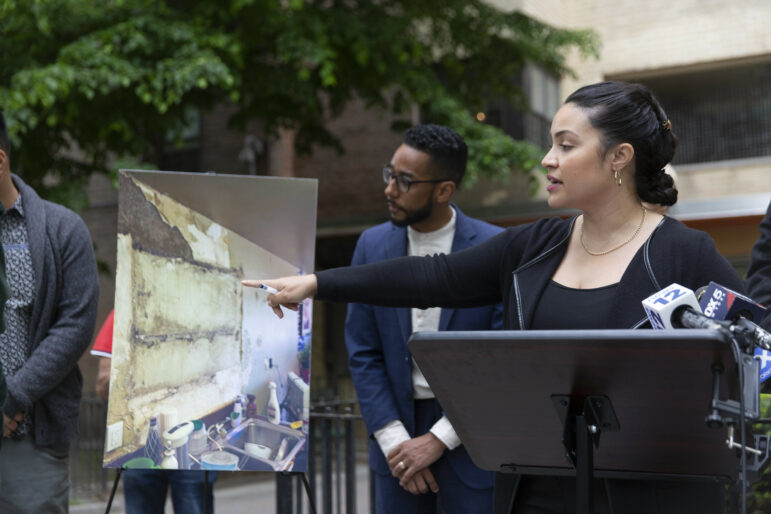When then-President Clinton signed the 1996 welfare reform act, most people–regardless of whether they thought it was a godsend or a disaster–believed it signaled “the end of welfare as we know it.” But as Goldberg and Collins show, the Personal Responsibility and Work Opportunity Reconciliation Act (PRWORA) was less a radical break with the past than a return to America’s native ambivalence about charity.
In Washington’s New Poor Law, Goldberg and Collins trace the evolution of American anti-poverty efforts back to the British Poor Laws, statutes created in Elizabethan England to regulate the lives of the poor through enforced labor. Like their American offspring, the British laws aimed to limit dependence rather than to ameliorate poverty: A central premise of the Poor Laws–“relief for able-bodied males was to be less desirable than the wages of the lowest paid independent laborer”–survived to become the driving spirit behind modern day workfare.
In America, welfare programs have almost always treated the poor as if they were personally flawed, in need of moral suasion rather than economic opportunity. Before the 1935 Social Security Act, most states provided assistance in direct exchange for poorhouse labor, called “workhouse relief.” Across the country, states forced impoverished people to perform manual labor in exchange for a bed and a meager allotment of food and drink. Nobody got in-hand cash, lest they squander it.
The settlement house and child-saving movements of the early 20th century demanded better benefits for widows and their offspring–the “blameless” poor–than for single and theoretically employable men. In 1909, the federal government passed a law requiring each state to give Widows’ Pensions. But like benefits for single men at the time, there was no national standard–all funding was locally generated, and aid varied wildly. No state provided enough to feed a family. Worse yet, many states denied welfare recipients–widows as well as others–the right to vote, or to hold elected office.
With the Great Depression’s mass unemployment, myths about the character deficits of the poor seemed less convincing. Enormous protest marches and the fear of social upheaval made federal intervention seem imperative. But even with FDR’s broad-based jobs programs, many able-bodied adults who were willing to work still needed income supports to live. Even the unemployable–the aged, blind, disabled or very young–struggled to make ends meet. That, argue Goldberg and Collins, is because of a profound and continuing equivocation about no-string benefits.
Take eligibility. Aid to Dependent Children, at its inception, was based on the assumption that fathers should be breadwinners and mothers, nurturers. At first, jobs were provided exclusively to men so that women could stay home and tend their young. But this policy has long rankled taxpayers, and since 1935 there has been a growing obsession with welfare as a reward for recalcitrant female behavior.
Since the 1930s, women who give birth out of wedlock have been expected to redeem themselves through workplace subservience. Consistently expected to care for children, the elderly and the disabled–but not exempted from work requirements–women were forced to juggle child care, home maintenance and employment in exchange for aid. In 1943–just eight years after passage of the Social Security Act–Louisiana refused benefits to ADC recipients (and even applicants) if there was work in the cotton fields. One parish required seven-year-old children to be field hands. Arkansas adopted a similar policy in the early 1950s for all “able-bodied” mothers and youth. The backlash, grounded in English Poor Law, was taking shape.
Although Aid to Families with Dependent Children never accounted for more than 1 percent of federal spending, it was a convenient target. As the New Right gained ascendancy, spokespeople began lambasting “handouts” as the root of all evil. Some theorists began to propose an idea straight from the British Poor Laws: that recipients “work off” their grants. They found receptive ears in a Republican Congress and a Democratic president, William Jefferson Clinton, who signed PRWORA into law in August 1996.
Washington’s New Poor Law attacks PRWORA by offering a detailed and thoroughly researched look at the myriad welfare “reforms” which preceded it. By linking the ideological shifts of each decade to economic gyrations, Goldberg and Collins give a cogent, if academic, analysis of how American anti-poverty efforts have failed.
Their ultimate solution–that government should create a jobs program for all able-bodied adults–is, however, a bit short on specifics. Who would pay? And who would determine who is able-bodied? Nonetheless, their advocacy of full employment is heartfelt and visionary, and readers will close the text sharing the authors’ dream of a just, humane and fully employed society.
Eleanor J. Bader, a disability rights advocate and writer, is the coauthor of Targets of Hatred: Anti-Abortion Terrorism (St. Martins Press, 2001).








